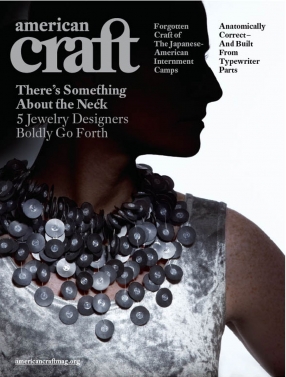From childhood, Susan Aaron-Taylor has been fascinated by her dreams. Today, the Michigan artist crafts intriguing mixed-media sculptures inspired by her dreams, thoughtfully interpreted in light of psychiatrist Carl Jung's spiritually charged ideas.
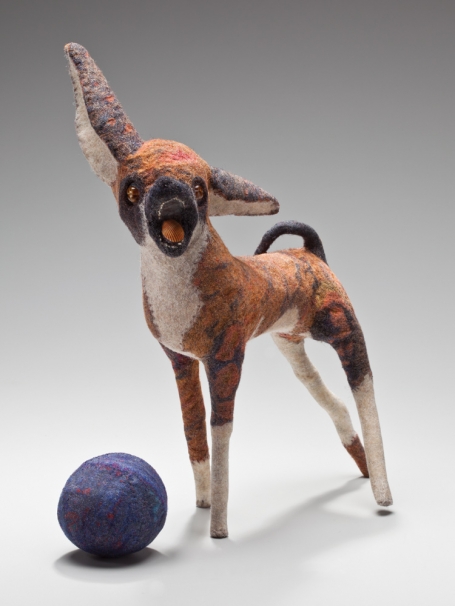
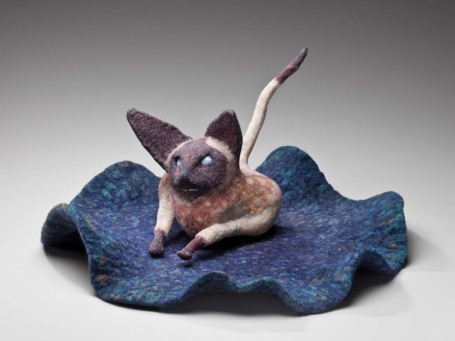
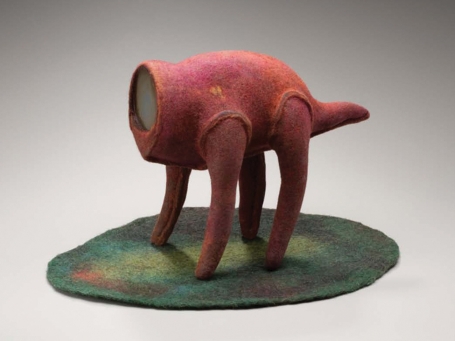
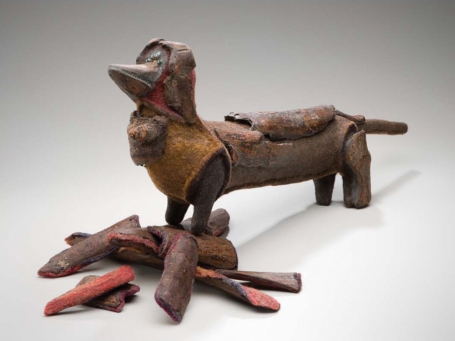
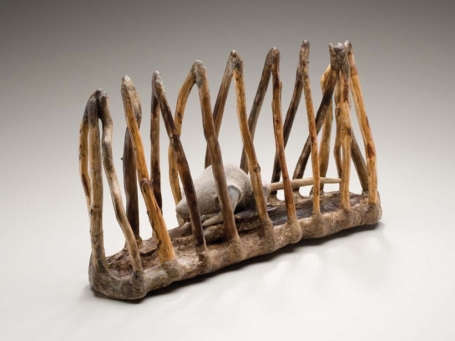
"At some point I discovered Man and His Symbols," Aaron-Taylor says of Jung's landmark work. The discovery triggered years of formal and solo study, during which she assimilated Jung's ideas about the collective unconscious, archetypes and individuation, the process of attaining psychic wholeness. She also discovered a way to achieve her emerging artistic aims: exploring her emotional self while communicating her findings in meaningful, even universal ways.
A professor at Detroit's College for Creative Studies, Aaron-Taylor mostly creates small sculptures portraying fantastic animals-dogs, cats and other creatures she's seen in dreams, then pondered and understood afterward in symbolic terms. Typically, her animals have sinuous bodies, attenuated limbs, ears and snouts. The anatomical distortions stem from her practice of fashioning the cores of her animal figures from tree roots and branches. To the cores, she affixes patches of multi-colored handmade felt.
"I always had dogs growing up," Aaron-Taylor says, "and, as an adult, one important cat." Comfortable recollections may explain why domestic pets show up in her dreams. But their appearance has deeper psychological meaning, she says.
Aaron-Taylor understands the dreamed-of creatures as Jungian archetypes-innate, timeless paradigms from human experience that Jung perceived as comprising the collective unconscious, and that arise universally in myths, folktales and dreams. "In Jungian symbology, everything is part of your psyche, or you wouldn't be dreaming it," she says. "If you dream about a cat or a dog, it's somehow a part of you that's come to tell you something."
The sculpture Fetch nicely illustrates the point. A stylized Chihuahua posed beside an oversize ball, Fetch initially appeared to Aaron-Taylor as a messenger in a dream. "He was about not playing enough," the artist explains. "He came to tell me I needed to play more."
Fetch was included in Aaron-Taylor's recent exhibit, "Dream Games," at River Gallery in Chelsea, mi. Other sculptures in the exhibit, among them Pug, Siamese Cat, Dachshund and Rat, likewise portray small animals. But sculptures with subjects more obviously related to Jung also appeared.
One was Axis Mundi, a vertical pole that re-creates a universally expressed cultural symbol-the point of connection between higher and lower realms, which Jung used to describe the self's journey to sublime completion. Another, Polarities, comprises two same-size rocks, respectively covered with black and white felt. Synthesizing polarities, such as those represented by the rocks, is one way human beings achieve Jung's individuation or psychic wholeness.
Synthesizing polarities may also explain the mixed-media character of Aaron-Taylor's sculptures, itself a product of her graduate education at Cranbrook Academy of Art. At Cranbrook, Aaron-Taylor studied textiles with Gerhardt Knodel and sculpture with Michael Hall.
"It was great because I had this polarity, which is a lot like Jungian psychology," Aaron-Taylor says. Maybe the artist's simultaneous exposure to fiber and sculpture at Cranbrook also demonstrates Jung's concept of synchronicity-two or more experiences that initially seem unrelated but ultimately form a meaningful connection.
The ideas informing Aaron-Taylor's art are complex, but they're nearly matched by her complicated technical processes. Aaron-Taylor scavenges the tree limbs and roots (and occasionally metal scraps) that form the cores of her sculptures. She chooses intuitively. "I see potentiality in nature," she says. "I have to feel a connection before I pick something up." Typically, she carves or cuts her wooden finds, using an X-Acto knife or a scroll saw.
It's the fabrication and application of felt that is most labor-intensive, however. To create the felt, she presses layers of commercially available fleece, dyed different colors, between sheets of netting. She then sprays the layered fleece with diluted liquid soap, then rubs, rolls and unrolls the spongy product. Next, she wets it
with hot and cold water, so it will shrink.
What results are sheets of chunky felt, which she cuts into sections, lays on the sculptures' cores and sews together as a skin. Finally, she drenches the felt with bookbinders glue. When it dries, she sands the sculptures' hardened surfaces manually.
What, ultimately, does Aaron-Taylor hope to achieve through her art? "As an artist I'm a communicator," she says, "but I'm trying to communicate on a heart level." Not nit-picked specifics, but the universal gist of her dreams finds expression in her works, always accompanied by brief, suggestive passages of text, poems or quotations.
"When people can relate, when they come up and say, ‘Aha, I get it,' then I'm fulfilled," she says.
Roger Green writes about art from Ann Arbor, MI.

